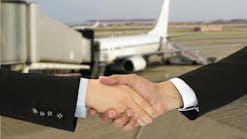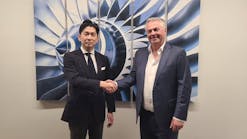Private jet operators are warning that Hong Kong will lose out to Shenzhen if it ignores the acute shortage of aircraft parking space at Chek Lap Kok.
The number of business jets registered in the city has surged to 50 from two since 1998 when the airport's Business Aviation Centre (BAC), catering to mainland firms and wealthy clients, opened.
But the BAC has not expanded as rapidly, forcing customers to park their planes at a remote area.
"Sometimes we have to park our clients' jets on the tarmac between the two runways at the far end of the airport island," said Wyn Li, director of marketing and client relations for Metrojet, one of Asia's largest private jet operators. It takes several hours to tow aircraft back to BAC for take-off, according to Li.
Business Aviation Asia (BAA), a Shenzhen-based business jet operator, recently struggled to find a bay at the city's airport to change an aircraft engine's waste oil. The overhaul, which usually takes eight hours, took three days to complete and made the owner very frustrated, said Jeffrey Lowe, a former director of sales and marketing at BAA.
"If Hong Kong continues not to address the [lack of] space issue, it is quite logical for the owners to look for alternative airports in the Pearl River Delta," Lowe said.
Metrojet is seeking to persuade its clients to park their jets at Clark International Airport in the Philippines, where it has invested in a maintenance facility. The additional costs arising from parking overseas could easily be offset by the lower labour costs, parking fees and jet fuel prices at Clark, Li said.
Private jet operators want the Airport Authority to consider their needs and incorporate the development of business aviation into their expansion plans. The authority recently completed its public consultation on the development of a third runway, which included plans for a new business jet facility. "Airport planning is a constraint to business aviation in Hong Kong, said Chris Buchholz, chief executive of newly formed Hong Kong Jet, a unit of HNA Group.
"I think common sense will prevail and we will have a second FBO [fixed-base operator] in Chek Lap Kok," Buchhloz said. Hong Kong Jet is among the interested participants in the upcoming bidding to be the second fixed-base operator - like BAC for business aviation.
In theory, the existing two hangars and apron area at BAC can accommodate up to 40 private jets. But private jets will occasionally be instructed to park at a remote area when the number exceeds 30, according to Ng Chi-kee, BAC's deputy director of airport operations.
"Parking a private jet, which will not be in use for a few days, at the remote parking base could enhance the efficiency and movement of aircraft in the ramp area," Ng said.
Unlike commercial jets, which have a tight turnaround time, business jet operators usually have lead time of several days.
Ng said BAC was unaware of private jet operators' complaints, but they had been in constant contact with BAC to enhance their operation.
Private jet operators say that a second fixed-based operator would ease the lack of parking space at the current facility. About two-thirds of the 50 private jets in Hong Kong have to park outside of the two hangars.
BAC's third hangar is due to open in the first quarter of next year, but it can only provide limited relief from the overcrowding.
A new operator for a business jet facility could bring about competition that could lower the handling fee that BAC, which has a market monopoly, levies.
BAC charges hangar rates of HK$100,000 to HK$1 million a month, depending on the size of the aircraft.
Copyright 2012 South China Morning Post Ltd.All Rights Reserved




